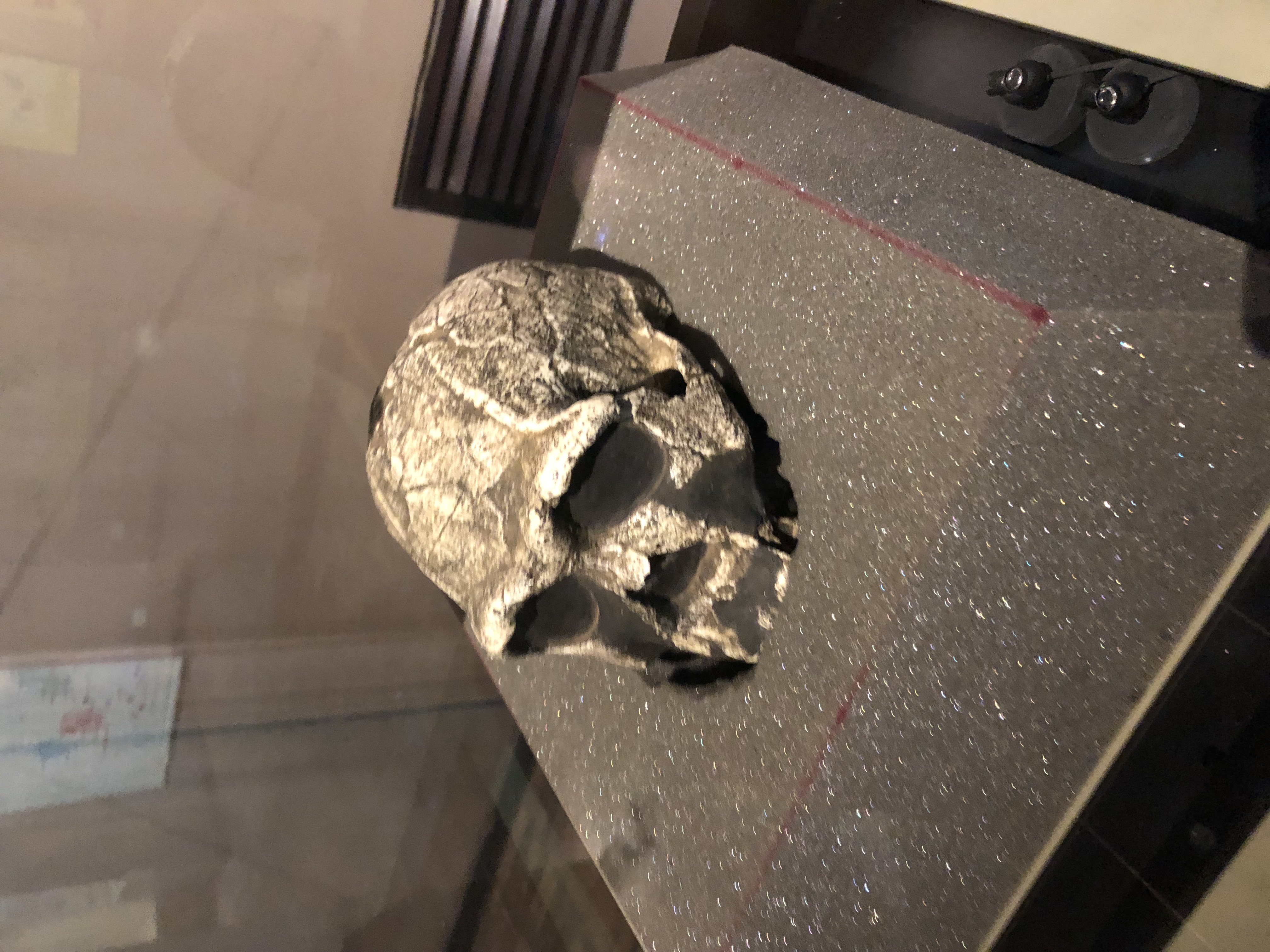KNM ER 3733 on:
[Wikipedia]
[Google]
[Amazon]
KNM ER 3733 is a  KNM ER 3733 is one of the oldest ''Homo ergaster'' skulls in the world. Recent research using
KNM ER 3733 is one of the oldest ''Homo ergaster'' skulls in the world. Recent research using
Archaeology Info
*{{cite web , title=Images of KNM ER 3733 , url=http://www.mnh.si.edu/anthro/humanorigins/ha/ER3733.html , access-date=2006-07-14 , archive-url=https://web.archive.org/web/20071011050746/http://www.mnh.si.edu/anthro/humanorigins/ha/ER3733.html , archive-date=2007-10-11 , url-status=dead Homo ergaster fossils Prehistoric Kenya 1975 archaeological discoveries 1975 in Kenya
fossil
A fossil (from Classical Latin , ) is any preserved remains, impression, or trace of any once-living thing from a past geological age. Examples include bones, shells, exoskeletons, stone imprints of animals or microbes, objects preserved ...
ized hominid cranium of the extinct hominid ''Homo ergaster
''Homo ergaster'' is an extinct species or subspecies of archaic humans who lived in Africa in the Early Pleistocene. Whether ''H. ergaster'' constitutes a species of its own or should be subsumed into '' H. erectus'' is an ongoing and unresol ...
'', alternatively referred to as African '' Homo erectus''. It was discovered in 1975 in Koobi Fora
Koobi Fora refers primarily to a region around Koobi Fora Ridge, located on the eastern shore of Lake Turkana in the territory of the nomadic Gabbra people. According to the National Museums of Kenya, the name comes from the Gabbra language:
...
, Kenya
)
, national_anthem = " Ee Mungu Nguvu Yetu"()
, image_map =
, map_caption =
, image_map2 =
, capital = Nairobi
, coordinates =
, largest_city = Nairobi
...
, right next to Lake Turkana, in a survey led by Richard Leakey
Richard Erskine Frere Leakey (19 December 1944 – 2 January 2022) was a Kenyan paleoanthropologist, conservationist and politician. Leakey held a number of official positions in Kenya, mostly in institutions of archaeology and wildlife conse ...
, by a field worker called Bernard Ngeneo.
 KNM ER 3733 is one of the oldest ''Homo ergaster'' skulls in the world. Recent research using
KNM ER 3733 is one of the oldest ''Homo ergaster'' skulls in the world. Recent research using magnetostratigraphy
Magnetostratigraphy is a geophysical correlation technique used to date sedimentary and volcanic sequences. The method works by collecting oriented samples at measured intervals throughout the section. The samples are analyzed to determine their '' ...
has determined the age of KNM-ER 3733 to be million years old.
KNM ER 3733 is a find of a near-complete cranium. Its brain size is about 850ccm. KNM ER 3733 was compared to male fossils KNM ER 3883 and KNM WT 15000 (Turkana Boy), who were also found at the Koobi Fora site, and because of this, is said to be female. The features of KNM ER 3733 are less robust compared to the two male crania. It is considered an adult because of the extensive wear of its teeth, the fact that its third molars were present before the individual died, and because its cranial sutures were fully fused, which is only possible in adult specimen."Knm-er." Academic Press Dictionary of Science and Technology. Oxford: Elsevier Science & Technology, 1992. Credo Reference. Web. 30 April 2014.
See also
*List of fossil sites
This list of fossil sites is a worldwide list of localities known well for the presence of fossils. Some entries in this list are notable for a single, unique find, while others are notable for the large number of fossils found there. Many of t ...
* List of human evolution fossils
The following tables give an overview of notable finds of hominin fossils and remains relating to human evolution, beginning with the formation of the tribe Hominini (the divergence of the human and chimpanzee lineages) in the late Miocene, roug ...
* KNM WT 15000
Turkana Boy, also called Nariokotome Boy, is the name given to fossil KNM-WT 15000, a nearly complete skeleton of a ''Homo ergaster'' youth who lived 1.5 to 1.6 million years ago. This specimen is the most complete early hominin skeleton ever ...
("Turkana Boy")
* KNM-ER 1470
''Homo rudolfensis'' is an extinct species of archaic human from the Early Pleistocene of East Africa about 2 million years ago (mya). Because ''H. rudolfensis'' coexisted with several other hominins, it is debated what specimens can be confiden ...
(''Homo rudolfensis'')
Notes
References
External links
*Archaeology Info
*{{cite web , title=Images of KNM ER 3733 , url=http://www.mnh.si.edu/anthro/humanorigins/ha/ER3733.html , access-date=2006-07-14 , archive-url=https://web.archive.org/web/20071011050746/http://www.mnh.si.edu/anthro/humanorigins/ha/ER3733.html , archive-date=2007-10-11 , url-status=dead Homo ergaster fossils Prehistoric Kenya 1975 archaeological discoveries 1975 in Kenya